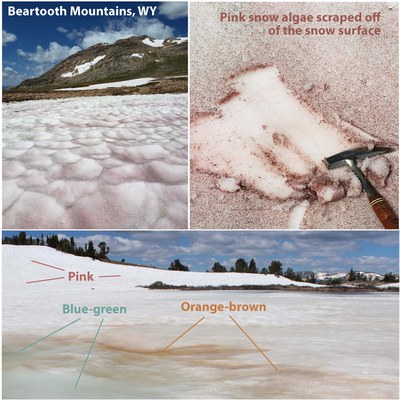What can appear as a still and lifeless blanket of ice is actually teeming with living organisms big and small. From burrowing wildlife to microscopic organisms, snow supports a massive food web. It can be easier to spot the larger organisms that have made their home in the snow, but how can you observe the smaller organisms that live in these freezing temperatures?

These organisms, of the Chlamydomonadales species, are a kind of algae that have adapted to thrive in deep, persistent snow fields. There are various types of algae that have adapted to this environment and each one produces a different pigment. For example, a species of algae, Chlamydomonas nivalis, creates a pink hue in snow, also known as watermelon snow. You can thank these remarkable organisms for the cornucopia of colors observed in the snow. Snow algae is an important part of the carbon and water cycles that occur in alpine environments. Similar to other types of algae that we might find in liquid water, snow algae gathers nutrients to grow through the process of photosynthesis—transforming the energy from the sun into fuel that allows it to grow. Therefore, if you’re visiting snowfields in the winter, you might not see this phenomenon in action due to the general lack of sunlight. However, late spring through early fall are ideal times to find patches of “blooming” snow.

As you venture into the alpine this spring, keep an eye out for brightly colored snow and consider how these wild spaces play an important role in our global environment. The Land Trust’s continued efforts to mitigate climate change and protect these habitats allow us to enjoy these landscapes now and for generations to come.
Sources:
Learn more:


